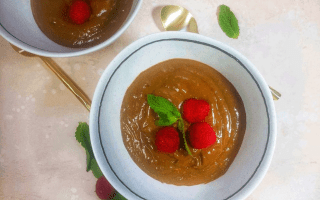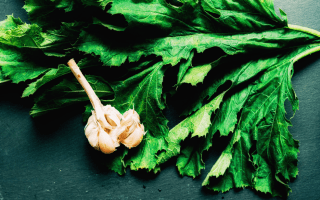Bananas are rather divisive for fruit. Everyone has an opinion on how ripe bananas should be when you eat them. Some claim bananas cause constipation, while others adamantly believe only green bananas do that. Is there really a difference in how the ripeness affects your body? Which ripeness is the healthiest? Do different levels of ripeness provide different nutrients? It turns out there are some differences, but bananas have health benefits at every stage.
The health benefits of bananas
Bananas are a great source of potassium, vitamin C, vitamin B6, fiber, magnesium and manganese. They contain 20% of the recommended daily allowances (RDAs) of the vitamin B6, 17% of the vitamin C RDA, 8% of magnesium, and 12% of potassium and dietary fiber. High consumption of potassium is associated with lower rates of stroke, coronary heart disease and cardiovascular disease (2). Bananas have even been touted as a superfood. They also contain several antioxidants, including gallocatechin and dopamine (6, 8). Both are especially abundant in the peel. While most are unaware of this, banana peels are actually edible.
Are unripened, green banana the healthiest?
In a green banana, the carbohydrate content is about 80-90% starch. And, much of the starch is resistant starch. While we can’t digest resistant starch, they feed the good microbes in your gut. For that reason, unripened bananas can “cause or aggravate pre-existing constipation. This property has been used in the BRAT (banana, rice, apple sauce, and toast) diet for [treating] diarrhea” (1).
Green bananas are also a good source of a dietary fiber called pectin. Both pectin and resistant starch improve blood sugar and digestive health. As they pass through the gut, bacteria ferment them to produce butyrate and other short-chain fatty acids, which prevent colon cancer (10). And, because they aren’t digested in the intestines, they don’t raise blood sugar levels. For people with diabetes, underripe bananas may better complement their diet because of their lower sugar content.
Studies “showed the health benefits [of] using green banana products, most of them related to the gastrointestinal symptoms/diseases, followed by the glycemic/insulin metabolism, weight control, and renal and liver complications associated to diabetes” (3). One study also showed how lectins in green bananas may inhibit HIV replication (9). It seems like bananas are fighting for your health on many fronts.
What are the benefits as the banana ripens and turns yellow?
Once bananas ripen and the starch converts into sugar, they can spike blood sugar. However, they also become easier to digest and thus, don’t make you constipated. In addition, ripening breaks down the chlorophyll pigments in fruits, like bananas and apples. And, in this case, a yellow color replaces the green one. As fruits ripen and chlorophyll breaks down, they also produce non-fluorescent chlorophyll catabolites (NCC), which are considered highly active, and therefore very powerful, antioxidants (5).
Unfortunately, as bananas age, they lose some micronutrients. For example, vitamin C and B6 are sensitive to light and heat. Vitamin C is also susceptible to air and is one of the more unstable nutrients. To retain these micronutrients, you can peel them and store them in the freezer. In the khai (or egg) banana and gros michel bananas, “total antioxidant activity, ascorbic acid content, phenolic content, TSS and sugar content increased with ripening and then declined when the fruits were at the over-ripe stage” (7).
Bananas are also considered an alkaline food that counteracts strong stomach acid and prevents acid reflux. However, some say green bananas can trigger it. But, ripe bananas also coat the stomach and esophageal lining to protect against heartburn.
Are overripe brown or spotted bananas the healthiest?
When a banana is almost all brown, all the starch has broken down into sugar. Brown bananas have as low as 1% starch, which makes them sweeter (and perfect to use in baking). They’re also even easier to digest than yellow bananas, which is especially helpful for those with irritable bowel syndrome or other digestion issues. Brown bananas contain the same antioxidants as yellow bananas, but a little less since they are in the overripe stage.
In addition, one Japanese study found that the black spots on yellow peels of bananas produce a substance called Tumor Necrosis Factor (4). This substance is capable of causing necrosis, or death, of tumor cells, which means they’re a great immunity booster. However, it’s been noted that merely eating bananas will not eliminate cancers.
No matter when you eat them, bananas appear to be a superfood that benefits your health in many ways. Studies consistently show that most American adults don’t consume enough fruit in their daily diets. And, while all the focus has been on their starch and sugar content, bananas should be recognized for their abundance of healthful nutrients. So, why not indulge yourself with a green, yellow or brown banana?
Read more posts about Nutrition where we share information on optimizing your health through food.
Publications
(1) Bae, Sun Hwan. “Diets for constipation.” Pediatric gastroenterology, hepatology & nutrition vol. 17,4 (2014): 203-8. doi:10.5223/pghn.2014.17.4.203
(2) D’Elia, Lanfranco, et al. “Potassium Intake, Stroke, and Cardiovascular Disease a Meta-Analysis of Prospective Studies.” Journal of the American College of Cardiology, U.S. National Library of Medicine, 8 Mar. 2011, pubmed.ncbi.nlm.nih.gov/21371638/.
(3) Falcomer, Ana Luisa, et al. “Health Benefits of Green Banana Consumption: A Systematic Review.” Nutrients, MDPI, 29 May 2019, www.ncbi.nlm.nih.gov/pmc/articles/PMC6627159/.
(4) Iwasawa, Haruyo, and Masatoshi Yamazaki. “Differences in Biological Response Modifier-like Activities According to the Strain and Maturity of Bananas.” Food Science and Technology Research, Japanese Society for Food Science and Technology, 4 Feb. 2009, www.jstage.jst.go.jp/article/fstr/15/3/15_3_275/_article.
(5) John Wiley & Sons, Inc.. “Ripe Fruit Contains Highly Active Antioxidants.” ScienceDaily. ScienceDaily, 10 November 2007, www.sciencedaily.com/releases/2007/11/071106095637.htm.
(6) Kanazawa, K, and H Sakakibara. “High Content of Dopamine, a Strong Antioxidant, in Cavendish Banana.” Journal of Agricultural and Food Chemistry, U.S. National Library of Medicine, 3 Mar. 2000, pubmed.ncbi.nlm.nih.gov/10725161/.
(7) Pongprasert, Nutthachai, et al. “Changes in Antioxidant Properties and Chemical Composition during Ripening in Banana Variety ‘Hom Thong’ (AAA Group) and ‘Khai’ (AA Group).” International Food Research Journal, 2 Dec. 2013., https://www.researchgate.net/publication/266378170_Changes_in_antioxidant_properties_and_chemical_composition_during_ripening_in_banana_variety_%27Hom_Thong%27_AAA_group_and_%27Khai%27_AA_group
(8) Someya, Shinichi, et al. “Antioxidant Compounds from Bananas (Musa Cavendish).” Food Chemistry, Elsevier, 9 Apr. 2002, www.sciencedirect.com/science/article/abs/pii/S0308814602001863.
(9) Swanson, Michael D, et al. “A Lectin Isolated from Bananas Is a Potent Inhibitor of HIV Replication.” The Journal of Biological Chemistry, U.S. National Library of Medicine, 19 Mar. 2010, pubmed.ncbi.nlm.nih.gov/20080975/.
(10) Topping, D L, and P M Clifton. “Short-Chain Fatty Acids and Human Colonic Function: Roles of Resistant Starch and Nonstarch Polysaccharides.” Physiological Reviews, U.S. National Library of Medicine, 1 July 2001, pubmed.ncbi.nlm.nih.gov/11427691/.







